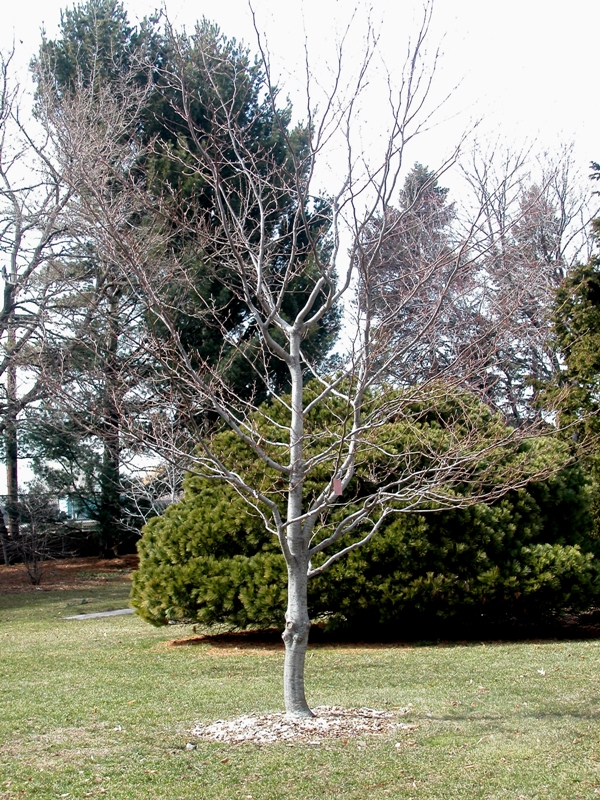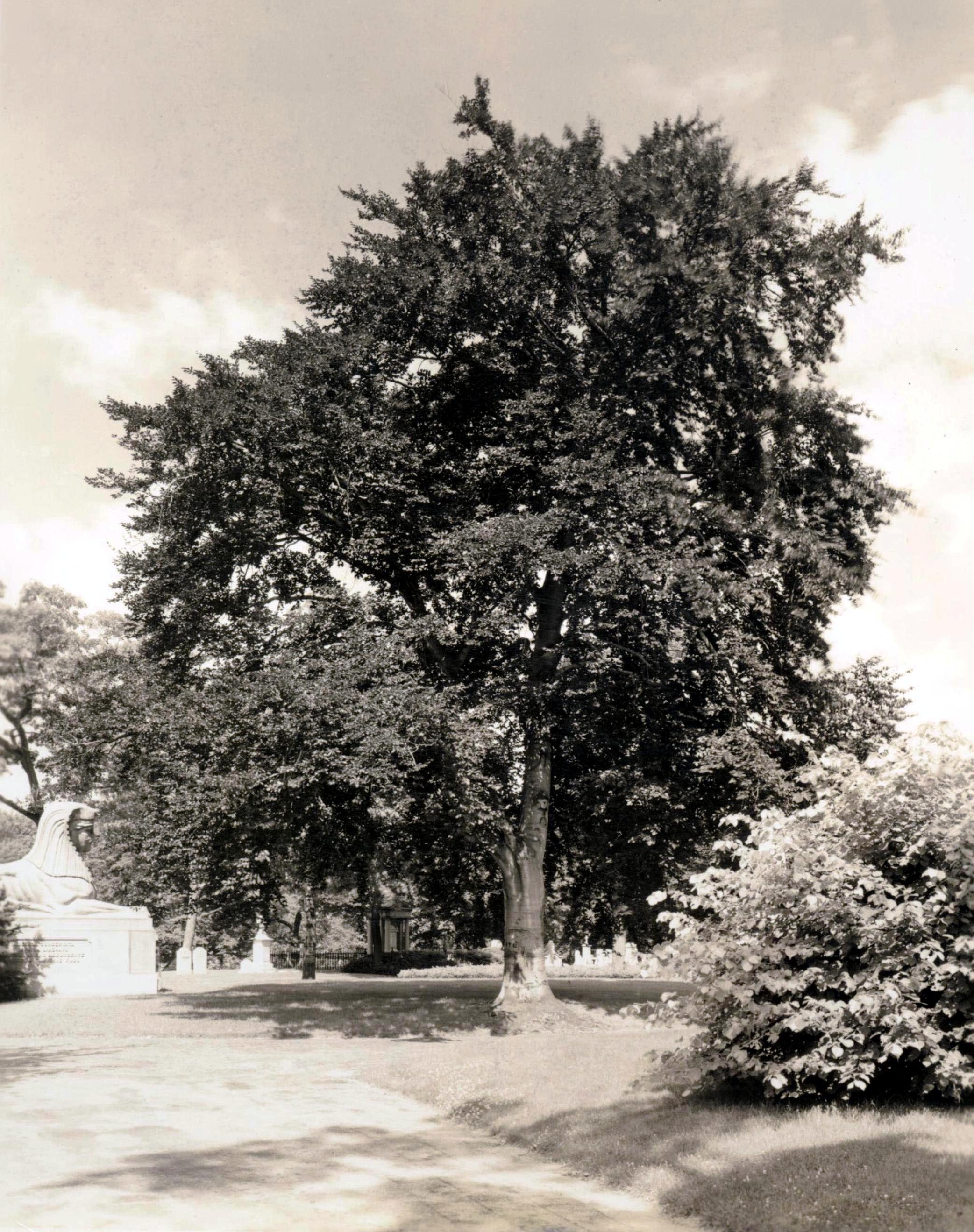
The Prince of Wales Beech Tree
In 1860 the nineteen-year old Prince of Wales, Queen Victoria’s son who became King Edward VII, thrilled America with an extended visit which included a stop at Mount Auburn Cemetery.
The Prince made his Mount Auburn stop in the late afternoon of Friday, October 19. He arrived at the Chapel, where he was met by two Trustees, Messrs. Uriel Crocker and Charles Nazro, and shown the interior and statuary.
Local papers reported “with his own royal hands, [he assisted] in the planting of two trees near the ornamental ground, in front, so far as holding them in their proper position while the soil was placed around the roots.” This concluding public act during the Prince’s American visit was a horticultural metaphor of international goodwill, for one tree was a European Beech and the other a native American Yellowwood.
An original poem by Mabel Lindsay, published in the Mount Auburn Memorial, November 4, 1860, celebrated this friendship:
One tree shall wear the purple, royal hue,
The other to its mountain nature true,
Republican and unadorned shall shine,
In simple beauty from the hand Divine;
And growing in such friendly neighborhood,
They type the lands which once at variance stood,
But now these enmities exist no more,
And friendly voices sound from shore to shore.
The public passion for royalty caused some to worry if either tree would have a chance to grow. A report circulated that the trees had been actually destroyed “root and branch” by the crowd following the Prince’s entourage.
The Mount Auburn Memorial assured its readers, however, that, although some did pick off a few leaves as a relic of the visit and “one or two old ladies succeeded in snapping off a twig,” the trees were flourishing and “if all despoiling hands are now kept away, they will probably live.”
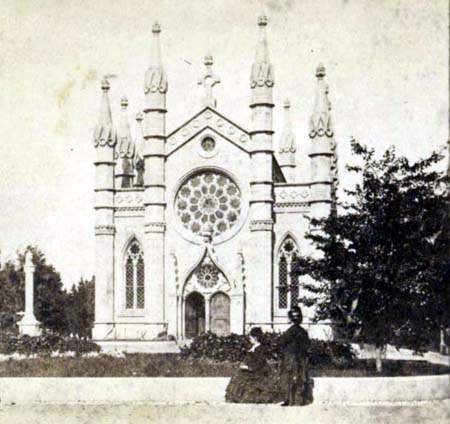
In 1982, Cemetery staff began to first notice what is known as Beech Tree Decline, a condition that seems to affect the largest and oldest trees, specimens 120 to 150 years old. Knowing that the tree might ultimately have to be removed, horticulture staff took cuttings from it in 1993 and Weston Nurseries in Hopkington, MA, grafted these onto several young root stocks.
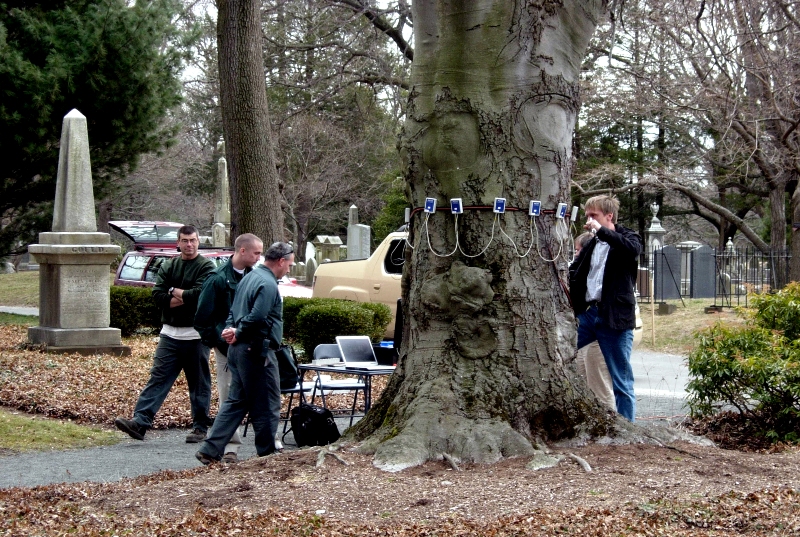
In March 2007, a Picus Sonic Tomograph, a new European technology to conduct sound wave imaging was used to electronically measure the amount of compromised wood in the tree’s trunk. These measurements allowed arborists to weigh the chances of trunk failure.
When more than 33% of a trunk’s wood is unsound, arborists usually decide to remove a tree. Imaging of the the Prince of Wales Beech revealed that more than 50% of the wood in the trunk was unsound. As a potential hazard to public safety, the tree was taken down in March 2008. Of the cuttings taken in 1993, only one scion survived.
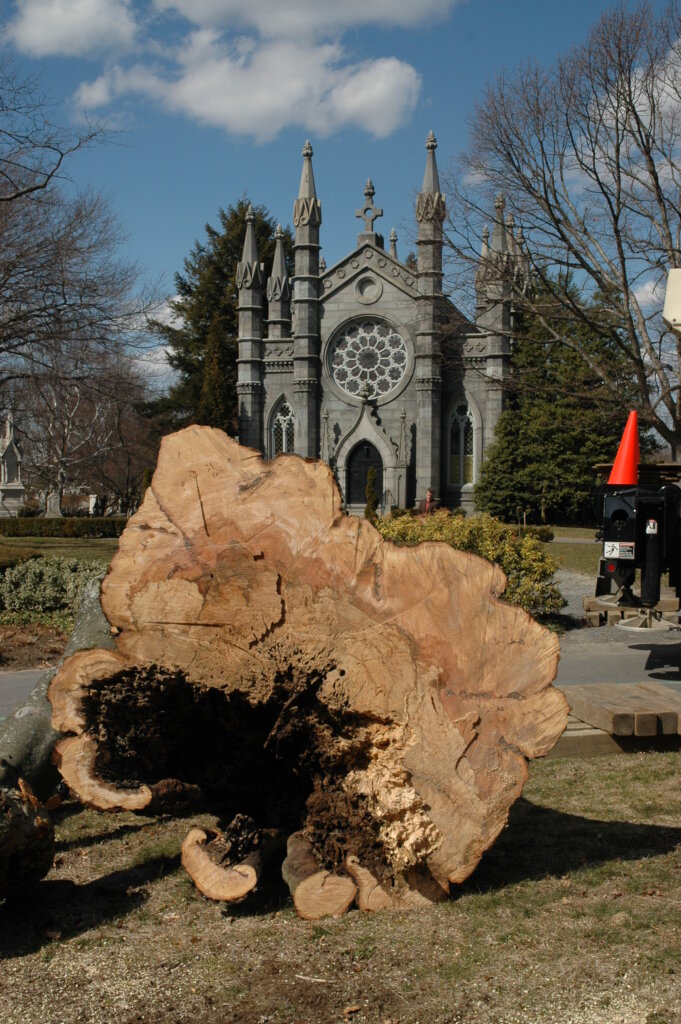
The Prince of Wales Beech Returns to Mount Auburn in 2008
Mount Auburn Cemetery held a special tree planting ceremony on May 3 2008 to commemorate the loss of one of its most famous trees, the Prince of Wales Beech which at the time of its removal was more than 150 years old.
The tree installed in its place, a product of the somewhat magical practice of horticultural grafting, is a scion, a cutting from the original tree that had grown 15 feet tall when it was planted.
The Prince of Wales Beech was the focus of a major preservation initiative in 1996, which included removing a paved road several feet away from the trunk to reduce pressure on the roots. The lawn adjoining the tree was replaced by shrubs and herbaceous groundcovers which are less competitive during droughts. The soil around the tree was enriched with emulsified seaweed, and gravel aeration channels were installed to alleviate compacted soil conditions.
Beech trees are now known to be highly susceptible to droughts, which have become increasingly common in Boston during the past few decades. When stressed by droughts, beeches become vulnerable to a fungal blight disease.
Members of the arborist staff work diligently to aid Mount Auburn’s collection of beeches, though an effective treatment for the Beech Tree Decline remains elusive. Without their efforts, our beech collection would suffer further depletion.
